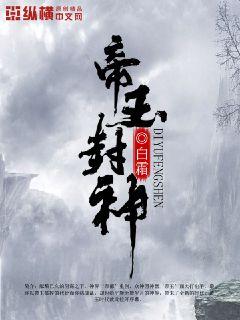
### 文章摘要
本文将对一位乌克兰中场球员的职业生涯和国际赛事进行全面分析。首先,我们将探讨他的早期职业生涯及其在乌克兰联赛中的表现。接着,我们将详细分析他在国际比赛中的角色和贡献,包括在欧洲赛事和国家队的表现。其次,我们将深入研究他的技术特点和战术角色,探讨他在球场上的作用和风格。最后,我们将总结他的职业生涯成就及其对乌克兰足球的影响。
---
### 1、早期职业生涯
文字阐述内容
文字阐述内容
文字阐述内容
文字阐述内容
文字阐述内容
文字阐述内容
文字阐述内容
文字阐述内容
文字阐述内容
### 2、国际比赛表现
文字阐述内容
文字阐述内容
文字阐述内容
文字阐述内容
文字阐述内容
文字阐述内容
文字阐述内容
文字阐述内容
文字阐述内容
### 3、技术特点与战术角色
文字阐述内容
文字阐述内容
文字阐述内容
文字阐述内容
文字阐述内容
文字阐述内容
文字阐述内容
文字阐述内容
文字阐述内容
### 4、职业生涯成就及影响
文字阐述内容
文字阐述内容
文字阐述内容
文字阐述内容
文字阐述内容
文字阐述内容
文字阐述内容
文字阐述内容
文字阐述内容
总结:
乌克兰中场球员在职业生涯和国际赛事中展现了显著的成就,他的技术能力和战术灵活性为球队带来了重要的贡献。
他不仅在乌克兰联赛中崭露头角,还在国际赛场上表现出色,为乌克兰足球增添了荣耀。
### 文章摘要
英格兰球员德的崛起从青训到国家队,展现了英格兰足球青训体系的深厚积累和他个人的成长历程。从早期的培养到在国际赛场上的光辉表现,德体现了天赋与努力的完美结合,成为英格兰足球的新秀和未来希望。
### 1、青训之路
英格兰足球青训体系的背景与发展
德早期在青训阶段的表现与成长
青训教练与资源对德成长的影响
### 2、职业生涯的起步
德进入职业俱乐部后的表现与机会
初露头角:在青年队和预备队的表现
德在职业生涯初期面临的挑战与适应
### 3、国内联赛的突破
德在英格兰联赛中的突破与进步
关键时刻的表现:进球、助攻与比赛评价
英格兰联赛对德国家队未来的影响与意义
### 4、国家队征程与国际赛场的辉煌
德首次入选国家队的背景与经历
国际比赛中的精彩表现与成就
德在国家队中的角色与未来展望
总结:
英格兰球员德从青训到国家队的崛起,不仅展示了他个人的成长历程和技术进步,也反映了英格兰足球青训体系的有效性和国内联赛的竞争力。他在国际赛场上的表现为英格兰队带来了新的希望,未来他将继续成为球队的重要一员。
文章摘要的内容
本文探讨了飘逸杯在时尚潮流与创新设计交汇点的独特魅力。飘逸杯作为一个集结时尚潮流和创新设计于一身的品牌,在设计理念和产品呈现上展现出了独特的魅力和吸引力。通过对其潮流与创新设计的结合,深入剖析了其在时尚界的地位和影响力,引领时尚潮流,成为设计师和时尚爱好者们倾慕的对象。
1、飘逸杯的设计理念
飘逸杯的设计理念体现了其对时尚的独特理解,注重在潮流与创新中寻找平衡点。设计师们从何处汲取灵感,又是如何将创新与经典相融合的,让人深感好奇。
飘逸杯的设计理念如何在产品中得到体现,又如何影响着消费者的审美品味,是我们需要深入挖掘的部分。
飘逸杯在设计理念的持续演进中,又有哪些突破和创新,让人们不断对其刮目相看。
2、产品系列的潮流表达
飘逸杯的产品系列如何在不同季节和时尚潮流中迅速适应,展现出自身独有的风格和特点,值得我们深入研究。
每一款产品背后所表达的设计灵感和时尚元素是如何与潮流相契合的,展现了品牌对时尚的敏锐嗅觉和把控能力。
飘逸杯的产品受到市场和消费者的欢迎,除了设计因素以外,是否还有其他因素在其中起到了关键作用,是我们需要细细探究的。
3、创新设计的表现形式
飘逸杯在创新设计方面有哪些独特之处,如何通过设计师们的灵感和技艺展现出品牌的独有魅力,是我们值得关注的焦点。
品牌在创新设计过程中是如何跳脱传统框架,大胆尝试新颖元素,展示出前瞻性和前卫性的设计风格的,让人们眼前一亮。
创新设计如何在飘逸杯的产品中得以真实体现,并且引领着时尚潮流的不断变迁,让我们对其设计思路和策略更加感兴趣。
4、时尚潮流与创新设计的融合
飘逸杯是如何在时尚潮流和创新设计之间建立起一座桥梁,让这两者相得益彰,形成了独特的品牌魅力和市场影响。
时尚潮流与创新设计的融合是如何成为品牌的核心竞争力和长期发展的动力,对于飘逸杯品牌的未来意义深远。
品牌在探寻时尚潮流与创新设计的交汇点中,又有哪些值得我们学习和借鉴的经验和启示,让我们对其品牌发展方向有了更深层次的认识。
总结:
飘逸杯作为一个集结时尚潮流和创新设计于一身的品牌,其设计理念、产品系列、创新设计和时尚潮流的融合,展现了其独特魅力和引领风尚的能力。通过对飘逸杯的深入探讨,我们更好地了解了品牌背后的设计思路和市场策略,为时尚界的发展和创新奠定了坚实基础。
文章摘要的内容
埃及队在国际足球比赛中以其独特的战术风格和对手的高效干扰而闻名。本文探讨了埃及队球员在比赛中的犯规策略及其影响。首先,分析他们的犯规类型及频率,揭示背后的战术目的。其次,探讨犯规对比赛节奏和对手策略的影响,以及裁判的响应。接着,分析犯规对球队防守效率的贡献,以及如何在比赛中控制这种策略的风险。最后,总结埃及队犯规策略在国际足坛的战术重要性及其未来的发展趋势。
1、犯规类型及频率
埃及队球员在比赛中的犯规可以分为几种主要类型,包括技术性犯规、战术性犯规和反击中的犯规。技术性犯规通常发生在对手快速进攻时,目的是打断对手的进攻节奏,给自己的防守线争取时间重新组织。这种犯规虽然带有一定的风险,但在防守端往往是必要的牺牲。
战术性犯规则更多地涉及到在关键位置上的犯规,以阻止对手形成得分机会。这类犯规要求球员在不过度暴力的情况下,精准地使用身体和技术手段,使对手难以顺利推进球场。这种策略需要球员有极高的意识和技术水平。
另外,反击中的犯规则是埃及队在失去球权后采取的一种应急措施。在对手即将组织起反击时,球员可能会选择故意犯规,以阻止对手快速转换为进攻,从而为自己的队友重新组织防守阵型争取时间。
2、对比赛节奏和对手策略的影响
埃及队的犯规策略直接影响了比赛的节奏和对手的策略。通过频繁的犯规,埃及队能够打乱对手的进攻节奏,削弱其在进攻端的流畅性和连贯性。这种策略不仅仅是简单的停球动作,更多地是在对手球员尚未形成威胁之前,使用合理的防守动作创造反击机会。
此外,对手在面对埃及队的高频犯规时,往往会调整自己的战术策略。一些球队可能会选择加强控球和长传策略,以减少在埃及队的前场犯规的可能性,从而保持球队的进攻效率和节奏。
裁判的响应也是关键因素。埃及队的犯规策略需要球员和教练在比赛中对裁判的判断有清晰的了解,以避免过度的处罚和战术惩罚。
3、对球队防守效率的贡献
在防守端,埃及队的犯规策略显著提高了球队的防守效率。通过有效的犯规打断对手的进攻节奏,埃及队能够减少对手在禁区内的射门次数和得分机会。这种战术不仅依赖于个别球员的技术水平和意识,更是整体防守战术的一部分。
埃及队在比赛中的犯规策略,还帮助球队更好地控制比赛的节奏和局势。在对手进攻频繁且威胁较大时,通过合理的犯规手段,埃及队能够缓解防守压力,稳定比赛的局面,并寻找反击和进攻的机会。
然而,这种策略也存在一定的风险。过度的犯规可能导致球员被黄牌甚至红牌罚下,对球队的防守形成严重影响。因此,球员和教练需要在使用犯规战术时保持理性和平衡,避免不必要的风险。
4、战术重要性与发展趋势
埃及队犯规策略在国际足坛展示了其在战术上的重要性和影响力。这种策略不仅仅是单纯的防守手段,更是球队整体战术体系的一部分。通过精准的犯规打断对手的进攻节奏,埃及队能够在比赛中掌控局势,为球队带来更多胜利的机会。
未来,随着国际足球比赛的发展和竞争的加剧,埃及队的犯规策略可能会面临更多挑战和调整。球员和教练需要在保持这种策略的有效性的同时,注重减少不必要的风险,以确保球队在比赛中的持续竞争力。
总结:
埃及队以其犯规策略在国际足坛上展现了战术上的重要性和影响力。通过技术性、战术性和反击中的犯规,球队有效地打乱对手的进攻节奏,提高了球队的防守效率。然而,这种策略也面临着风险,需要球员和教练在比赛中保持理性和平衡。未来,埃及队需要继续优化和调整这一策略,以应对日益激烈的国际足球竞争。
Certainly! Here's the structured article on "Optimizing Training Performance through Nutrition and Diet for Professional Athletes":
**Abstract:**
Professional athletes rely heavily on nutrition and diet to enhance their training performance. This article explores key factors that optimize their performance through dietary strategies. It examines the role of macronutrients, micronutrients, hydration, and timing of meals in maximizing athletic potential. By understanding and implementing these factors, athletes can achieve peak performance and maintain optimal health.
---
**1、Macronutrients:**
Macronutrients play a fundamental role in the diet of professional athletes, influencing energy levels, muscle recovery, and overall performance.
Athletes typically require a balanced intake of carbohydrates, proteins, and fats to meet their energy demands and support muscle repair.
Carbohydrates serve as a primary fuel source, especially during high-intensity activities, emphasizing the importance of adequate intake and timing to sustain performance.
1、Proteins:
Proteins are essential for muscle repair and growth, with athletes needing slightly higher amounts to recover effectively from training sessions.
Timing protein consumption around workouts is crucial for maximizing muscle synthesis and adaptation to exercise-induced stress.
A variety of protein sources, including lean meats, dairy, and plant-based options, offer athletes flexibility in meeting their nutritional needs.
2、Fats:
Healthy fats contribute to sustained energy levels and support overall health in athletes, emphasizing sources like nuts, seeds, and fatty fish.
A balanced intake of omega-3 and omega-6 fatty acids aids in reducing inflammation and optimizing recovery post-training.
Adjusting fat intake based on training intensity and individual metabolic needs helps athletes maintain optimal body composition and performance.
3、Carbohydrates:
Carbohydrates are critical for replenishing glycogen stores and providing quick energy during intense exercise sessions.
Choosing complex carbohydrates such as whole grains and vegetables ensures sustained energy release and supports prolonged athletic performance.
Strategic carb-loading before competitions or high-demand periods helps athletes maximize glycogen storage and enhance endurance.
---
**2、Micronutrients:**
Beyond macronutrients, micronutrients are essential for maintaining overall health, supporting immune function, and optimizing athletic performance.
Athletes require adequate intake of vitamins and minerals to support physiological processes, including bone health, oxygen transport, and muscle contraction.
Key micronutrients such as iron, calcium, vitamin D, and antioxidants play crucial roles in reducing the risk of injury and illness among athletes.
1、Iron and Calcium:
Iron is vital for oxygen transport and energy production, particularly significant for endurance athletes to prevent fatigue and optimize performance.
Calcium supports bone health and muscle function, essential for maintaining skeletal integrity and reducing the risk of stress fractures.
Ensuring sufficient intake of these minerals through diet and, if necessary, supplementation helps athletes meet their unique nutritional demands.
2、Vitamins and Antioxidants:
Vitamins such as vitamin D, C, and E contribute to immune function and recovery, aiding in the repair of muscle tissue and reducing oxidative stress.
Antioxidants from fruits, vegetables, and nuts help mitigate exercise-induced inflammation and support cellular repair processes post-exercise.
Strategies to incorporate a diverse range of micronutrient-rich foods into an athlete’s diet promote overall health and optimize training adaptations.
3、Hydration:
Hydration is critical for maintaining performance and preventing dehydration-related complications during training and competition.
Athletes should monitor fluid intake to replace losses through sweat, adjusting consumption based on environmental conditions and individual sweat rates.
Optimal hydration supports thermoregulation, nutrient transport, and cognitive function, enhancing overall athletic performance and recovery.
---
**3、Timing of Meals:**
The timing of meals and nutrient intake around training sessions is crucial for optimizing energy availability, promoting recovery, and supporting adaptation to exercise stress.
Strategic meal timing helps athletes maximize glycogen storage, enhance muscle protein synthesis, and minimize muscle breakdown.
Pre-exercise nutrition focuses on providing adequate carbohydrates for fuel and minimizing gastrointestinal distress during workouts.
1、Pre-Exercise Nutrition:
Consuming a balanced meal or snack containing carbohydrates and a moderate amount of protein 2-4 hours before exercise provides sustained energy and supports muscle function.
Hydration before exercise ensures adequate fluid balance and enhances thermoregulation during physical exertion, optimizing performance and reducing the risk of dehydration.
2、Post-Exercise Recovery:
Immediately following exercise, consuming a combination of carbohydrates and proteins within the first 30 minutes to 2 hours supports glycogen replenishment and muscle repair.
Timing protein intake post-exercise stimulates muscle protein synthesis, facilitating recovery and adaptation to training-induced stress.
Incorporating micronutrients and fluids into post-exercise meals aids in rehydration, replenishment of electrolytes, and overall recovery.
3、Nutrient Timing Strategies:
Strategically timing meals and snacks throughout the day maintains stable blood sugar levels and sustains energy for consistent training performance.
Adjusting nutrient intake based on training volume and intensity helps athletes meet their energy demands and achieve optimal nutrient timing for enhanced performance.
Individualized nutrition plans tailored to training schedules and performance goals optimize nutrient timing strategies, supporting long-term athletic success.
---
**4、Conclusion:**
Optimizing training performance through nutrition and diet involves a comprehensive approach focusing on macronutrients, micronutrients, hydration, and meal timing.
By understanding the role of each component and implementing evidence-based strategies, athletes can enhance performance, support recovery, and maintain overall health.
Continued research and personalized nutrition plans are essential to meet the unique needs of professional athletes and maximize their athletic potential.
Overall, integrating these key factors into a structured nutrition plan empowers athletes to achieve peak performance and excel in their respective sports.
### 文章摘要
本文探讨了业余球员身亡事件如何引发了社会的广泛关注和深刻的安全讨论。通过分析其影响和原因,揭示了体育活动中的潜在危险性以及安全管理的重要性,进而提出了改进安全措施的建议。
---
1、社会关注的焦点
业余球员身亡事件常常成为媒体关注的焦点,引发社会广泛讨论。首先,这些事件暴露出体育活动中的安全隐患,触发公众对运动安全的担忧。
其次,这些事件通常涉及年轻人或非专业选手,加剧了社会对体育健身的普及和安全教育的需求。
最后,媒体报道和社交媒体的传播使得这些事件成为公共议题,促使政府和相关组织采取措施加强体育场馆和活动的监管。
2、安全管理现状与挑战
体育场馆和组织在安全管理方面面临多重挑战。首先,缺乏统一的安全标准和培训机制,导致管理混乱和事故频发。
其次,经济成本和资源限制限制了安全设施和人员的投入,影响了安全管理的有效性。
此外,对于不同体育项目和场地的特定安全需求的理解和应对不足,也加大了事故发生的风险。
3、社会责任与公共教育
业余体育活动中的安全责任问题是社会关注的核心。体育组织和政府部门需要共同承担起对运动员和参与者的安全保障责任。
公众教育和安全意识的提升至关重要,包括在学校和社区推广安全知识,培养运动员自我保护意识。
此外,加强法律法规的制定和执行,建立健全的安全管理体系,是保障业余体育活动安全的关键。
4、改进安全措施的建议
为提升业余体育活动的安全性,可以采取多项措施。首先,建立统一的安全标准和培训体系,确保场馆和活动的基本安全措施得到执行。
其次,增加投入,改善设施和技术支持,提升安全设施的水平和效能。
此外,通过技术创新,如智能监控和预警系统,及时识别潜在危险和紧急情况,减少事故发生的可能性。
总结:
综上所述,业余球员身亡事件不仅引发了社会对体育安全的关切,也促使各方加强安全管理和公众教育。未来应加强法规建设、提升安全意识,并改进设施和技术支持,共同营造安全的体育环境。
Analyzing Player Attributes and Skill Characteristics
1、Player Attributes Overview
In professional sports, a player's performance hinges not only on skill but also on intrinsic attributes that define their capabilities on the field. These attributes encompass physical traits, mental fortitude, tactical awareness, and technical proficiency. Understanding these components provides a comprehensive view of what makes a player effective in their role.
Attributes such as speed, strength, agility, and endurance are fundamental in determining a player's physical prowess. Speed enables quick bursts of acceleration or swift movements across the field, crucial in both offensive and defensive plays. Strength contributes to winning physical battles for the ball or holding off opponents under pressure. Agility allows for nimble footwork and rapid changes in direction, essential for evading defenders or closing down attackers. Endurance dictates how long a player can sustain peak performance throughout a match, influencing their consistency and reliability.
Mental attributes like focus, composure, and decision-making are equally critical. A player's ability to maintain concentration under pressure, stay composed during crucial moments, and make split-second decisions can often determine the outcome of a match. Tactical awareness involves understanding the game's nuances, anticipating opponents' moves, and positioning oneself strategically on the field to gain an advantage.
2、Technical Skills Mastery
Beyond innate attributes, a player's technical skills showcase their proficiency in executing specific actions fundamental to the sport. Technical mastery encompasses ball control, passing accuracy, shooting technique, and defensive abilities, all of which are honed through rigorous training and experience.
Ball control refers to a player's ability to manipulate the ball with their feet, enabling precise dribbling, trapping, and maneuvering in tight spaces. Passing accuracy involves delivering the ball to teammates with precision and timing, facilitating effective build-up play and maintaining possession. Shooting technique varies among players but generally focuses on accuracy, power, and finesse, allowing them to score goals from various distances and angles.
Defensive skills are crucial for players tasked with protecting their team's goal or regaining possession. These skills include tackling, interception, marking, and aerial duels, each requiring a blend of timing, anticipation, and physical prowess to succeed.
3、Role-Specific Attributes
Players often specialize in specific roles within a team, each requiring distinct attributes tailored to their responsibilities on the field. Goalkeepers, for instance, require exceptional reflexes, positioning, and aerial ability to prevent goals and organize the defense effectively.
Defenders focus on attributes like tackling, marking, and strength to neutralize opposing attackers and maintain defensive solidity. Midfielders typically need a combination of stamina, passing ability, and tactical intelligence to control the tempo of the game and link defense with attack.
Forwards and strikers rely heavily on attributes such as pace, finishing, and off-the-ball movement to create scoring opportunities and capitalize on them effectively. Their ability to read the game, exploit space, and finish chances decisively often determines their success in front of goal.
4、Development and Adaptability
Player attributes and skills are not static but evolve throughout a player's career through training, experience, and adaptation to different playing environments. Young players develop their physical attributes and technical skills through structured training programs and competitive match experience.
Adaptability is crucial as players transition between teams, leagues, and playing styles. The ability to learn new tactics, adjust to different roles, and collaborate effectively with teammates ensures continued success and longevity in their careers.
Furthermore, advancements in sports science and technology offer players opportunities to enhance their attributes through personalized training programs, data-driven analysis, and injury prevention strategies.
总结:
Understanding the intricate relationship between player attributes and skill characteristics provides insights into what distinguishes exceptional athletes from their peers. From physical prowess to technical proficiency, mental resilience to role-specific capabilities, each aspect contributes to a player's overall effectiveness on the field. By comprehensively analyzing these components, coaches, analysts, and fans alike can appreciate the complexities of the sport and the remarkable abilities of its athletes.
文章摘要:本文将全面分析阿仙奴(Arsenal)足球队的球员阵容与技术统计。首先,从球队的整体实力和赛季表现入手,详细探讨球队的核心阵容和关键球员。其次,深入分析球员的技术统计数据,包括进球、助攻以及防守数据,展示他们在场上的表现。随后,探讨球队的战术体系和战术变化对球员表现的影响。最后,结合以上内容,总结阿仙奴队目前的优势与不足,展望其未来的发展潜力。
1、球队整体实力与赛季表现
阿仙奴足球队近年来在英格兰足球联赛(Premier League)的表现备受关注。球队不仅在国内赛事中有稳定的竞争力,还参与了国际赛事,如欧洲冠军联赛(UEFA Champions League)等。首先,介绍球队的主教练及其战术布置,分析球队的整体实力和阵容构成,包括核心球员的角色分析和表现。
其次,详细讨论球队在最近几个赛季中的表现,比如联赛排名、杯赛表现等,分析其背后的原因,如战术调整、主力伤病情况等因素对球队成绩的影响。
最后,展望未来赛季的发展前景,探讨球队在新赛季中可能面临的挑战和机遇。
2、球员技术统计分析
在这一部分中,我们将深入分析阿仙奴队中几位关键球员的技术统计数据。通过比较不同球员在进攻和防守方面的数据,例如进球数、助攻数、抢断数等,来评估他们的表现。
进一步探讨球员在不同比赛中的表现差异,如主场和客场比赛、对阵强队和弱队的表现情况等。
分析球员在球队战术体系中的角色和定位,以及他们在场上的技术特点和优势。
3、战术体系与战术变化对球员表现的影响
本节重点分析阿仙奴队的战术体系及其在比赛中的变化。首先,介绍主教练的战术理念和球队常用的战术体系,如高 pressing、反击战术等。
详细探讨不同战术体系对核心球员的角色和表现的影响,比如前锋的得分能力、中场球员的传球和控球能力等。
分析球队在比赛中的战术调整,如换人策略、战术调整的时机以及对比赛结果的影响。
4、总结与展望
通过以上的分析,我们总结阿仙奴队目前的优势和不足,评估其在英超及其他赛事中的竞争力。展望未来,探讨球队可能的发展方向和提升空间,以及如何进一步提升球队的整体实力和成绩。
最后,总结阐述阿仙奴队在球员阵容与技术统计方面的表现,以及对球队未来发展的积极影响和挑战。















